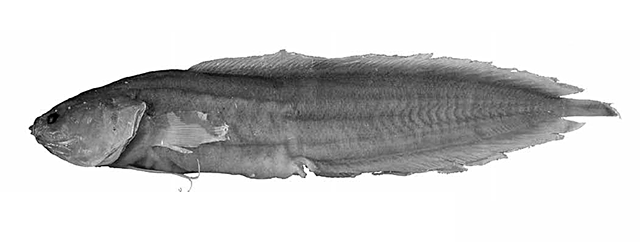|
Dorsal soft rays (total): 79-86; Anal soft rays: 60-64; Vertebrae: 42-43. This species is distinguished by the following characters: D 79-86, A 60-64, D/A 26, V in D 2.2-2.3; vertebrae 12+30-31=42-43; anterior nostril located 1/4 distance from upper lip to aggregate distance to anterior margin of eye; free pseudoclaspers 2 pairs, the outer pseudoclasper is wing-shaped with broad base and distally widened supporter with anterior hook, prominent knob on inner face of outer pseudoclasper fitting into opening of inner pseudoclasper, the inner one is long, very massive, stalked with narrow base, distally with claw-like, outwardly directed strong spines, inner and outer pseudoclasper matching together in lock/key mode; cheeks with 6 scale rows on upper part and 4 rows on lower part; no upper preopercular pore; otolith elongate, its length to height is 2.3-2.4, with pointed anterior and posterior tips, symmetrical pre- and postdorsal angles, the section in between straight, short sulcus with fused colliculi, its centre anterior of centre of otolith, inclined about 5°, otolith length to sulcus length is 2.4-2.5 (Ref. 76869). |

